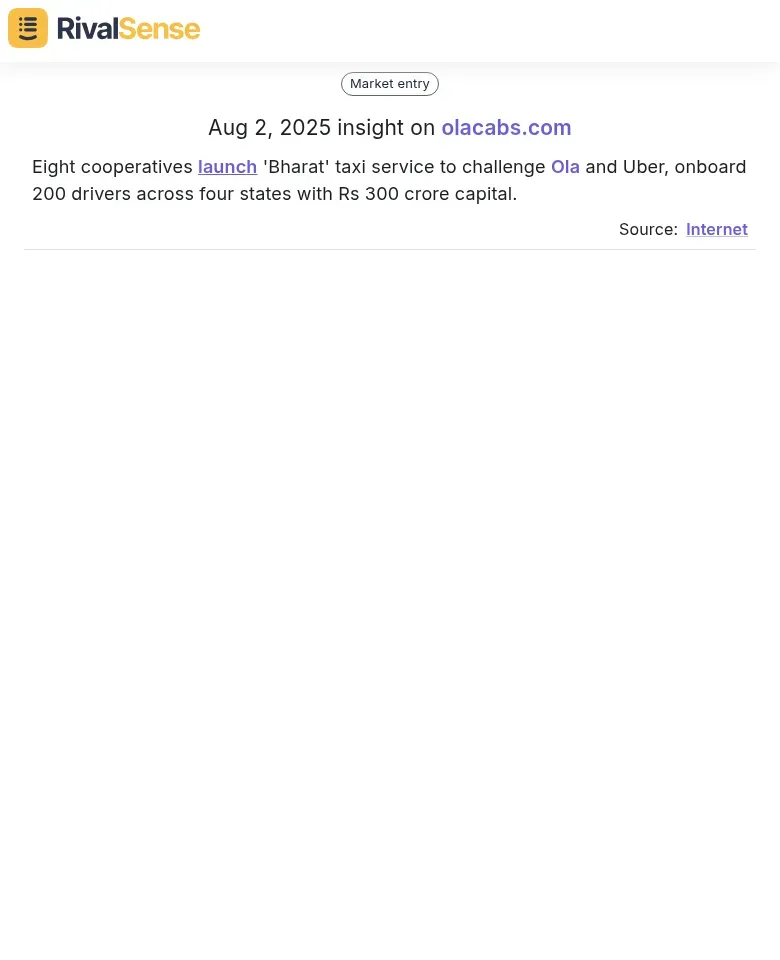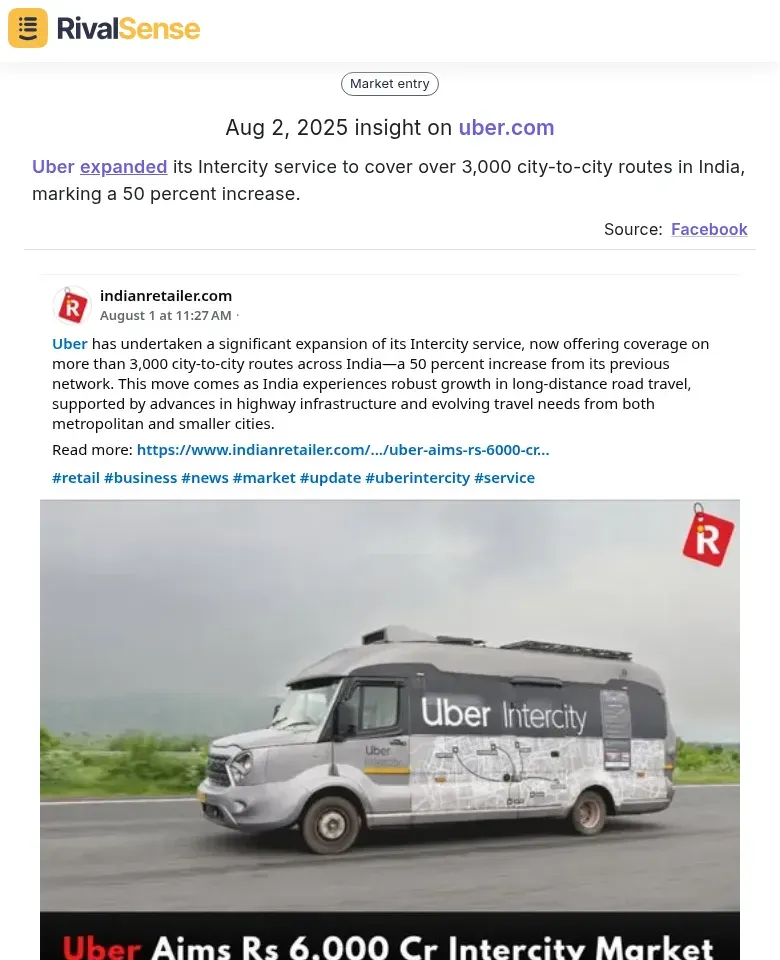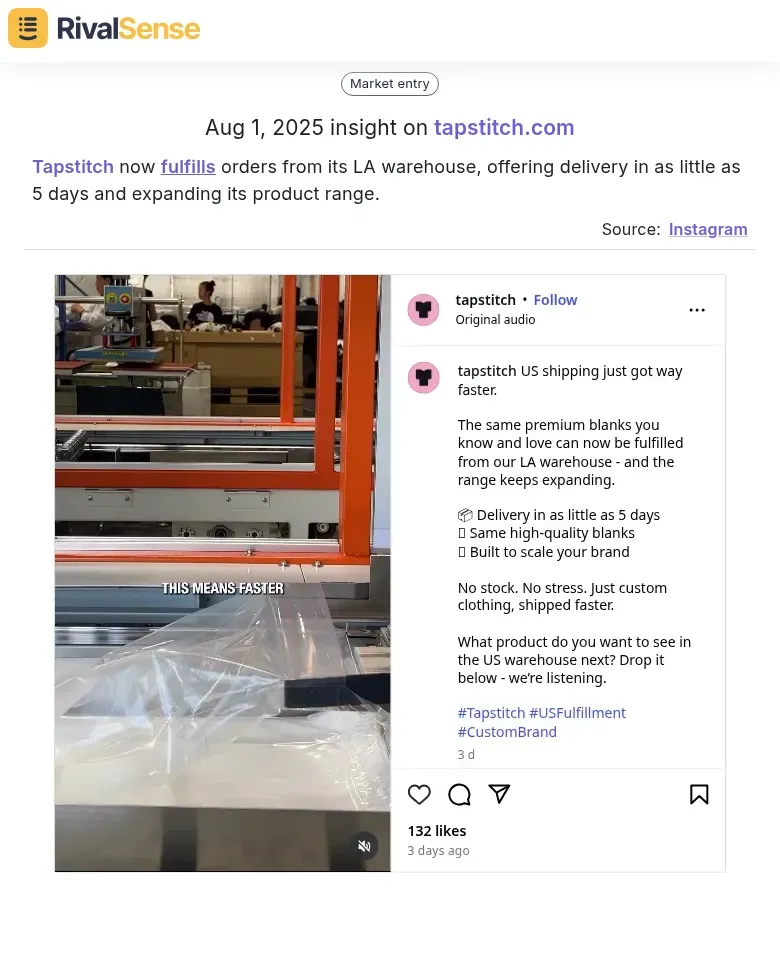Optimizing Market Entry with Competitor Advisory Insights
In today's competitive landscape, understanding your competitors isn't just beneficial—it's essential for successful market entry. Competitor advisory insights provide a strategic roadmap to navigate market complexities by revealing what others excel at and where they fall short. This intelligence lets you tailor strategies to fill gaps and capitalize on unmet customer needs.
Effective analysis goes beyond surface observations, diving deep into product offerings, marketing tactics, customer feedback, and pricing strategies. Such scrutiny uncovers differentiation opportunities—like overlooked customer segments or underutilized marketing channels. Here's how to operationalize these insights:
- 🎯 Identify Key Competitors: Focus on businesses directly challenging your value proposition
- 📱 Monitor Digital Footprints: Track website updates, social activity, and customer reviews
- 🔍 Analyze Strengths/Weaknesses: Gather performance metrics and satisfaction data
- 💡 Adapt & Innovate: Refine your strategy using collected insights
Example Insight Value: Tracking competitor movements reveals emerging threats and partnership opportunities before they disrupt your position.
🤝 Leveraging Collaborative Models for Market Entry
Collaborative approaches like joint ventures and partnerships transform market entry challenges into opportunities. By pooling resources and expertise, businesses share risks while accelerating market penetration through local knowledge and scalable operations. Capital investment proves critical here—ensuring sustainability through initial phases while funding rapid scaling.
Consider how eight cooperatives recently launched the 'Bharat' taxi service to challenge Ola and Uber, onboarding 200 drivers across four states with ₹300 crore capital:

Why this matters: Monitoring partnerships reveals market gaps and collaboration potential, helping preempt competitive threats. Practical steps to implement:
- 🤝 Find Complementary Partners: Match strengths/weaknesses strategically
- 🎯 Define Clear Objectives: Align on goals, roles, and profit-sharing
- 💰 Secure Early Funding: Explore VC, angels, or crowdfunding
- 🌍 Leverage Local Expertise: Navigate regulations and culture
- 📊 Monitor & Pivot: Track metrics and adjust tactics
🌐 Expanding Service Offerings to Capture Market Share
Service expansion demands strategic precision to capture market share effectively. Geographic and route diversification can uncover underserved areas while rapid scaling establishes presence before competitors react. Analyzing competitors' service coverage reveals high-potential gaps for your entry.
For instance, Uber recently expanded its Intercity service to cover 3,000+ Indian routes—a 50% increase:

Why this matters: Tracking service expansions exposes regional opportunities and helps time your moves to outpace rivals. Actionable checklist:
| Priority | Action Item | Outcome |
|---|---|---|
| High | Conduct competitor gap analysis | Identify underserved regions |
| Medium | Prioritize high-demand areas | Maximize initial impact |
| Critical | Monitor competitor counter-moves | Enable rapid adaptation |
Additional tactics:
- 🚀 Launch in culturally aligned regions first
- 📦 Optimize logistics for new territories
- ⏱️ Use real-time data to refine geographic strategy
⚙️ Enhancing Customer Experience Through Operational Efficiency
Operational excellence directly boosts customer experience during market entry. Localized fulfillment centers slash delivery times, while expanded product ranges meet diverse needs. Competitor analysis reveals where to position facilities and which products to prioritize for maximum impact.
Tapstitch exemplifies this by fulfilling orders from its new LA warehouse, achieving 5-day deliveries while broadening product options:

Why this matters: Insights into fulfillment and product expansions highlight operational gaps to address. Implement through:
- 🗺 Map Competitor Supply Chains: Uncover inefficiencies in your model
- 🤖 Adopt AI Logistics: Enable real-time tracking and route optimization
- � Build Contingency Plans: Mitigate disruption risks
- 📦 Test Products Regionally: Validate demand before full rollout
💰 Strategic Capital Allocation for Competitive Advantage
Capital deployment makes or breaks market entry success. Prioritizing funds toward rapid expansion, talent acquisition, and scalable infrastructure accelerates growth while deterring competitors. Balance short-term investments with long-term sustainability through vigilant financial planning.
Practical allocation framework:
1. 🚀 **Fuel Rapid Expansion**:
- Allocate 40% to marketing/sales
- Example: SaaS companies targeting digital ads for early adopters
2. 👥 **Onboard Top Talent**:
- Budget 30% for competitive salaries + equity
- [ ] Define critical roles
- [ ] Structure onboarding workflows
3. 🖥️ **Build Scalable Infrastructure**:
- Invest 20% in cloud/CRM systems
- Tip: Start modular → expand incrementally
4. 🛡️ **Financial Safeguards**:
- Reserve 10% as contingency fund
- Review cash flow forecasts quarterly
🎯 Conclusion: Integrating Insights into Your Strategy
Competitor insights transform market entry from guessing games into precision plays. By benchmarking offerings, identifying unmet needs, and differentiating your position, you turn intelligence into actionable advantage. Remember: This isn't a one-time exercise but an ongoing process requiring constant vigilance.
Key implementation steps:
- 📏 Benchmark Relentlessly: Compare features, pricing, and service against rivals
- 🕳️ Conduct Gap Analysis: Pinpoint overlooked customer needs
- 🚩 Position Uniquely: Highlight differentiators in all messaging
Ready to operationalize this? Try RivalSense for free and get your first competitor report today! Our platform tracks product launches, pricing changes, expansions, and partnerships—delivering actionable insights weekly so you stay ahead.
📚 Read more
👉 How to Decode Strategic Shifts Through Competitor Partnerships
👉 Practical Competitive Research: A Step-by-Step Guide for Business Leaders
👉 Optimizing Telehealth: Researching Competitor Ecosystems Guide
👉 How Phrase's AI Focus Spurred RivalSense's Global Strategy Shift
👉 Predictive Competitor Analysis: Turning Internet Insights into Strategic Wins
